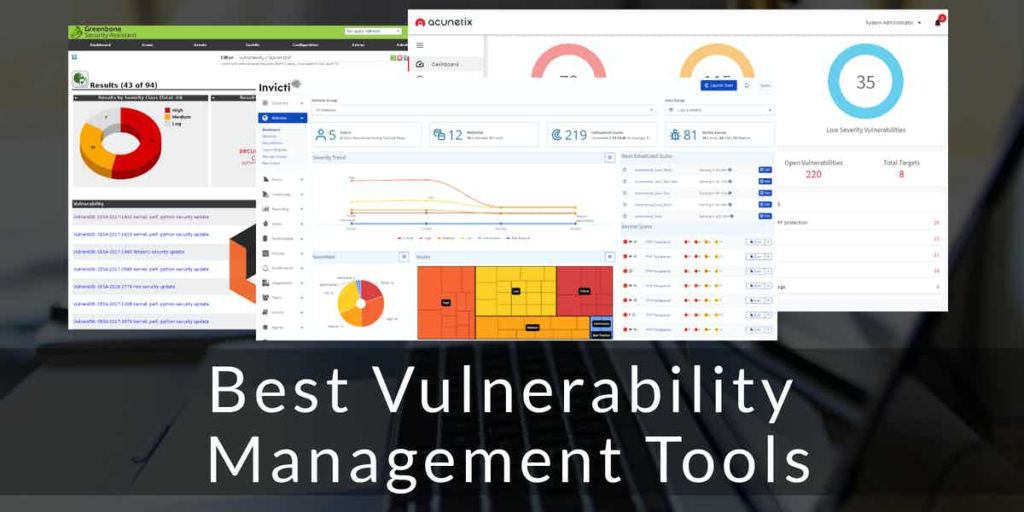In this article we will be diving deep about this interesting topic Top Vulnerability Management Solutions.

Now, let us see what it means !
Vulnerability management software: What is it ?
– Common cybersecurity tools like firewalls and antivirus software are well known to many individuals. These are reactive tools, which are made to deal with attacks as they happen.
– On the other hand, vulnerability management software approaches cybersecurity in a different way. Instead, it actively seeks for flaws by scanning the network, finding vulnerabilities, and making remedial recommendations to lessen the likelihood of future corporate security breaches. It is a clever strategy for businesses to avoid being compromised by hackers.
– Some vulnerability management technologies may assign threat levels to weaknesses, which enables IT teams to prioritize the most important problems that should be handled first, in addition to just providing information into how to remediate potential cybersecurity concerns.
– Some even have the ability to automatically repair some vulnerabilities by installing patches and doing other adjustments.
How Do Tools for Vulnerability Management Operate ?
– Vulnerability management uses a variety of strategies.
– Vulnerability scanners scan all endpoints to detect missing security patches and other vulnerabilities.
– Penetration testing analyzes your business like a hacker to find weak points in its defenses.
– Tools for breach and attack simulation (BAS) look for flaws and give a mechanism to order remedies.
– Vulnerability assessments can help prioritize fixes by analyzing an organization’s overall security posture and weaknesses.
– Patch management applies the fixes prioritized by the vulnerability management tool.
– Tools for managing vulnerabilities incorporate a number of these techniques and include prioritizing and remediation. To reduce the workload on overworked security workers, certain products automate these tasks.
Key Characteristics of Tools for Vulnerability Management
– To cover all of a company’s enterprise security requirements, vulnerability management needs a substantial set of functions. Consider which of these aspects is most pertinent to your requirements when choosing which of these cybersecurity solutions is ideal for your company.
– Keep in mind that some tools may not include these features. Some offer only a few, while others offer lots of them. However, it usually takes a variety of products to cover all bases.
– Continual checking for potential weaknesses and monitoring
– Monitoring system with rules (IT can determine which systems and assets to monitor)
– Setting rules for notifications
– Visualizing the attack surface
– Analytics and modelling of attack vectors
– Risk-scoring
– patch control
– Automatic patches and updates
– To detect problematic access routes and recommend reduced risk traffic redirections, do network access path analysis.
– Analysis of endpoint and secured asset reachability
– Organizations can create customized reports, such as policy-driven compliance reports, to meet specific security and auditing needs.
– Automatic correction
Vulnerability Management Tools: Benefits
– Vulnerability management has clear advantages. Less breaches occur as a result of vulnerability management, which also provides a tool to gauge how secure an organization’s perimeter actually is. It is also an excellent way to protect data and identify potential attacks before they happen.
– The majority of cyberattacks originate internally, through email, phishing, and social engineering schemes, therefore vulnerability management technologies also close the gaps that permit lateral movement within your network.
Strong vulnerability management software and automated product suites protect systems and free up staff to focus on other critical tasks. Therefore, the time saved by security professionals and the prevention of data breaches could more than offset the cost of a comprehensive vulnerability management program.
Vulnerability Management System Selection Guide
– The following considerations should be made while choosing vulnerability management tools :
– What operating systems does the tool support? Some support various OSs, while others exclusively support Windows or Linux.
– The endpoints covered are what? Others cover cellphones, IoT, WiFi, and other devices in addition to servers, PCs, and laptops.
– How well-versed in these tools is IT? If your IT personnel only has Windows knowledge, avoid purchasing a Linux-based scanner.
– Analyze prices in detail. Be sure to read the small print when purchasing paid scanners to be aware of potential additional costs, support fees, and other items.
– Be open to finding multiple solutions. Combining tools is frequently a wise move because one tool might overlook something that another one notices.
Most effective vulnerability management solutions
Qualys VMDR
Overview:
Qualys VMDR helps businesses inventory all hardware and software, classify assets, and automatically detect new or unmanaged items on the network. It evaluates assets for vulnerabilities and applies the latest threat intelligence to prioritize and fix risks.
Key Features:
- Real-time threat intelligence and machine learning to detect and stop breaches.
- Automatic identification of vulnerable assets and application of superseding patches.
- Continuous discovery and categorization of known and unknown assets.
- Detailed visibility into hardware, applications, services, and network information.
- Detection of major flaws and configuration errors across devices and applications.
- Prioritization of critical vulnerabilities using real-time threat intelligence.
- Orchestration workflows integrate Cloud Agents, virtual scanners, and passive network analysis.
Rapid7 (Nexpose & InsightVM)
Overview:
Rapid7 provides an on-premises scanner (Nexpose) with real-time network coverage and a cloud-based solution (InsightVM) offering advanced features like remediation workflows and the Insight Agent.
Key Features:
- Accurate risk assessments highlight vulnerabilities to address first.
- Data-driven insights allow IT to resolve issues efficiently.
- Risk scoring from 1–1,000 for precise prioritization.
- Visibility across on-premises, cloud, and containerized infrastructures.
- Adaptive security detects and evaluates new devices and vulnerabilities.
- Policy assessments and benchmarking tools included.
- Both built-in and custom reporting options.
Tenable.io
Overview:
Tenable.io provides up-to-date information on the entire attack surface, enabling IT teams to improve vulnerability management workflows.
Key Features:
- Community support for shared expertise on vulnerability management.
- Nessus sensors provide full visibility across on-premises and cloud environments.
- Prioritizes vulnerabilities based on impact, threat intelligence, and data science.
- Tracks dynamic IT assets like mobile devices, cloud instances, and VMs.
- Continuous monitoring of network traffic identifies hard-to-scan and short-lived devices.
- Cloud connectors offer visibility and assessment for AWS, Azure, and Google Cloud.
- Automated workflows integrate data with external systems via APIs and SDKs.
F-Secure / WithSecure
Overview:
The enterprise security division of F-Secure is now called WithSecure, while the F-Secure brand remains for the consumer business. Its cloud-based scanner in WithSecure Elements Vulnerability Management is easy to deploy and protects networks, assets, deep web, and compliance.
Key Features:
- Immediate reporting of brand violations, phishing websites, and third-party scams.
- Fully managed service, either outsourced or cloud-hosted.
- Web crawling technology provides full network, asset, and deep web visibility.
- Windows Vulnerability Management Endpoint Agent collects endpoint data automatically.
- Internet Asset Discovery identifies all internet-facing systems.
- Vulnerability scanning detects system weaknesses, including ransomware and other malicious software.
Conclusion
That’s all about the Top Vulnerability Management Solutions. After reading this essay, I hope you found it enjoyable and learned something new. We have learned what are the key characteristics, benefits, and key features of vulnerability management tools.


